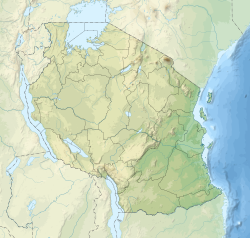
Back تومباتو Arabic Tumbatu Catalan Tumbatu Island CEB Tumbatu German Tumbatu Esperanto Tumbatu Spanish Tumbatu French Tumbatu Italian Tumbatu Lithuanian Тумбату Russian
 Swahili women in Zanzibar late 19th Century CE | |
| Location | Kaskazini A District, Unguja North Region, |
|---|---|
| Coordinates | 5°49′07″S 39°13′23″E / 5.81861°S 39.2231°E |
| Type | Settlement |
| History | |
| Material | Coral rag |
| Cultures | Swahili |
| Site notes | |
| Ownership | Tanzanian Government |
| Management | Antiquities Division, Ministry of Natural Resources and Tourism [1] |
| Architecture | |
| Architectural styles | Swahili & Islamic |
| Official name | Tambatu Island Historic Sites |
| Type | Cultural |

Tumbatu (eneo la kale wa Tumbatu in Swahili) is a historic Swahili settlement located on Tumbatu Island, Kaskazini A District of Unguja North Region in Tanzania. This site is a significant archaeological site that contains a large number of collapsed coral stone structures including private houses and several mosques, the largest of which is located on the shore facing the village of Mkokotoni on Unguja. Pearce initially looked into the ruins in 1915 and wrote about the mosques, palace, and other stone homes.[2]
The site has been investigated by Mark Horton and Catherine Clark in the 1980s and 1990s [3] and by Henriette Rødland in 2017 and 2019.[4] It was inhabited between the 12th and 15th centuries CE, a time of expansion and growth for many Swahili sites along the East African coast. The first known Swahili or proto-Swahili sites are dated to the 6th and 7th centuries, and some of the earliest Swahili settlements can be found on Zanzibar at places such as Unguja Ukuu and Fukuchani. These were African fishing and farming communities who traded with each other as well as inland East African communities and the wider Indian Ocean world, and who started their conversion to Islam in the 8th century, to which the earliest mosque has been dated.[5]
Larger towns such as Tumbatu developed as a result of this extensive trade in the early second millennium CE, and archaeological investigations have uncovered large amounts of imported ceramics and glass beads at the site, attesting to the extensive trade networks existing between African urban areas and other Indian Ocean ports. Various local production activities also took place within Tumbatu, such as iron and pottery production, and spinning. There are currently no other known archaeological sites on the island, although some older structures of unknown date are known within the village of Jongowe. Tumbatu likely had a strong relationship with neighbouring Mkokotoni, which is easily accessible by boat.
- ^ "Antiquities Division". Retrieved 21 Jul 2022.
- ^ "Settlements of Pemba and Zanzibar" (PDF). Retrieved 21 Jul 2022.
- ^ Horton, M. and Clark, C. (1985) Archaeological Survey of Zanzibar. Azania 20 (1): 167-171. C.
- ^ Rødland, H. (2017). Preliminary Report from Archaeological Survey on Tumbatu Island, Zanzibar Archipelago, Tanzania. Nyame Akuma: 89, 29-33.
- ^ Horton, N (1996). Shanga: The archaeology of a Muslim trading community on the coast of East Africa.
